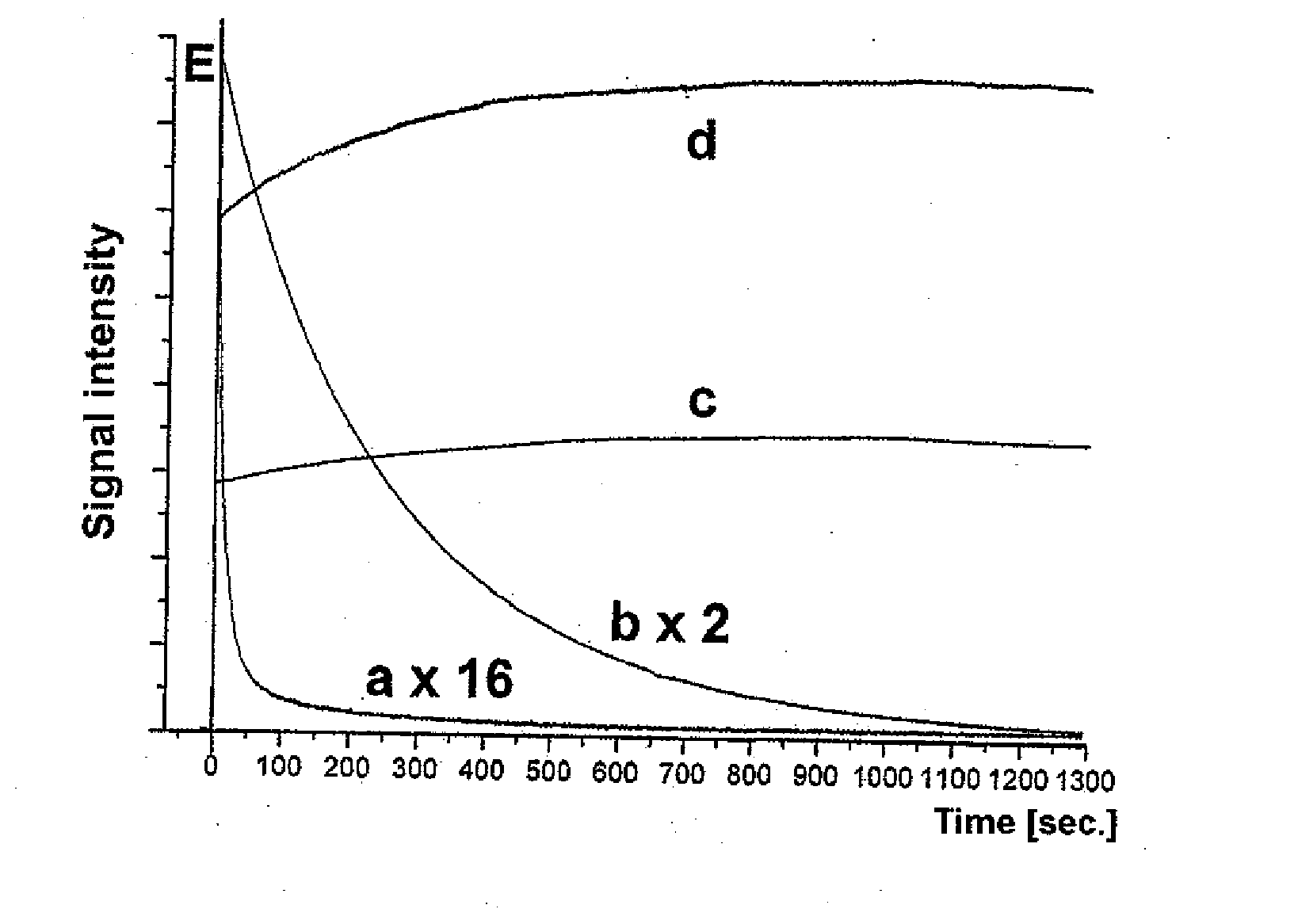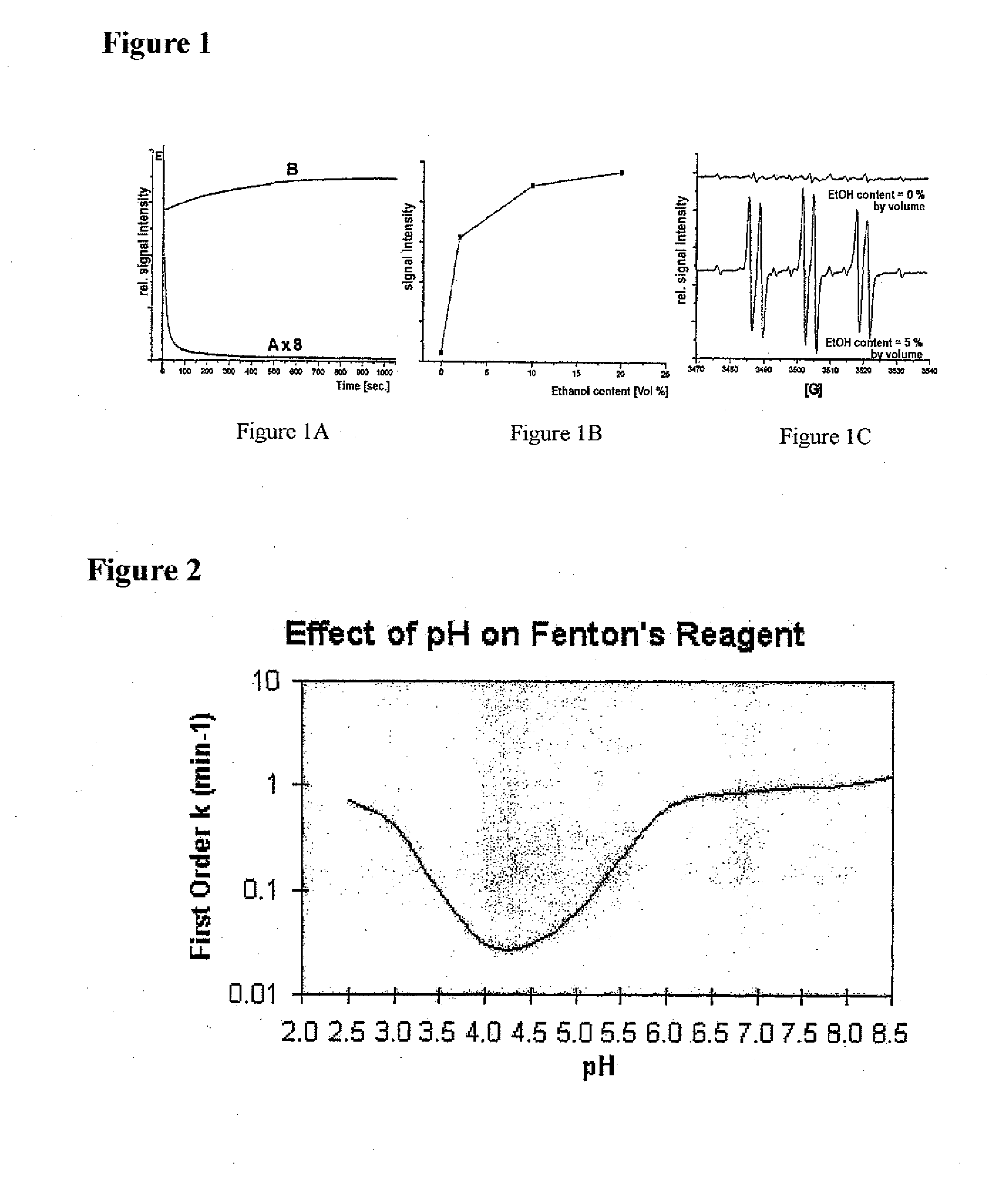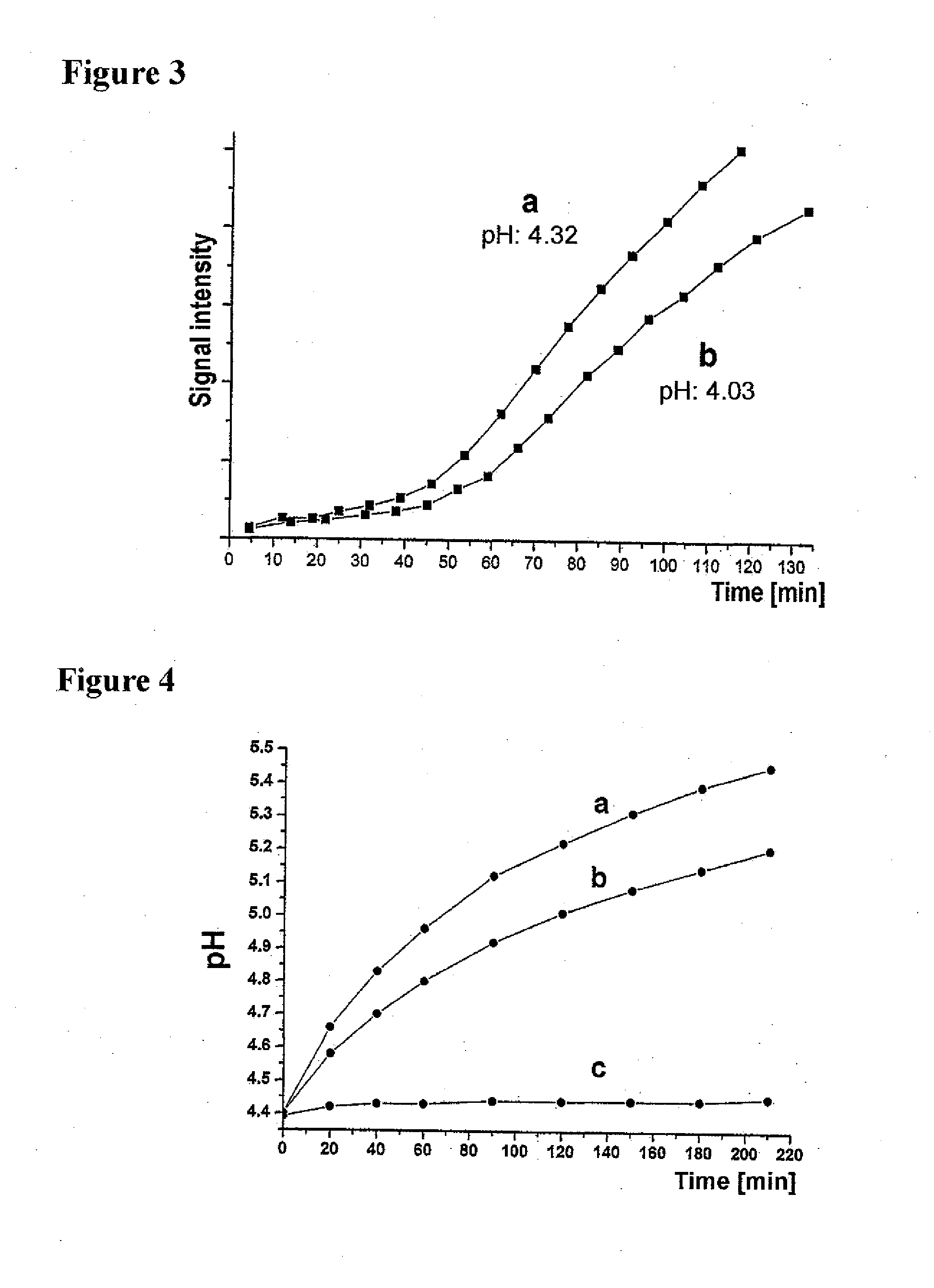Method for Determining the Endogenous Antioxidative Potential of Beverages by Means of Esr Spectroscopy
a technology of antioxidative potential and endogenous antioxidative potential, which is applied in the direction of electron paramagnetic resonance measurement, food testing, instruments, etc., can solve the problems of excessive acceleration of the generation of hydroxyl radicals, significant weaknesses and falsifications of the described method, and the lag time measurement according to the previous method is not readily suitable for correct determination, etc., to achieve low lag time values, higher eap, and higher degree of ph
- Summary
- Abstract
- Description
- Claims
- Application Information
AI Technical Summary
Benefits of technology
Problems solved by technology
Method used
Image
Examples
example 1
Measurement Method
[0181]1.1. Technical Equipment
[0182]The following ESR spectrometer was used for the lag time measurement by means of PBN and for the EAP determination by means of POBN:[0183]Type: X-band spectrometer; Bruker (ESP-300); cavity type: Bruker 4108 TMH No.: 8603.[0184]Type: X-band spectrometer; Magnettech Miniscope MS 100.
[0185]The irradiation experiments concerning the artificial generation of radicals (irradiation experiments FIG. 1B, C) were carried out by means of X-ray irradiation (X-ray tube from Seifert Debyflex).
[0186]The term “X-ray system” for the generation of radicals, as used here, describes the artificial generation of radicals via ionizing radiation (X-ray radiation), as known in the prior art.
[0187]The measurements concerning the stability of the spin trap adducts (PBN and POBN spin adducts, i.e. “trapped” hydroxyl and hydroxyethyl radicals) under the artificial generation of radicals by means of a Fenton system (FIG. 1A, FIG. 7) were carried out using a...
example 2
Detection of the Stability of the Hydroxyethyl Radical Adducts
[0237]Using a special radical-generating structure (Fenton system) and by means of irradiation experiments (X-ray radiation for generating radicals), it was possible to demonstrate that hydroxyl radicals are detected directly only to a slight extent in the case of lag time measurement. Instead, the signal intensity of the ESR spectra is caused mainly by the secondary hydroxyethyl radical, which obviously forms much more stable PBN spin adducts (FIG. 1). The shape of curve (a) in FIG. 1A shows that the stabilized hydroxyl adducts (PBN) formed after generation via a Fenton system (pronounced rise during the injection up to E) are almost completely broken down within one minute, while the hydroxyethyl adducts (PBN) produced in a Fenton system with the addition of EtOH remain practically unchanged even after 17 min (curve (b)). The additional rise in curve (b), i.e. the increase in signal intensity, can be attributed to the f...
example 3
Dependence of the Lag Time Value on the Initial pH
[0241]Another aspect of the study was to determine the dependence of the measured lag time value on the various parameters of the forcing test. This is particularly important when an experimentally determined lag time value is to be correlated in a reproducible manner with the EAP or the flavor stability of a beer, which can be detected to a much less defined extent. It is important here to distinguish between the effects caused by the measurement method and the “real” effects brought about by the beer ingredients.
[0242]In this connection, reference is made in particular to the effect of the pH in the course of the lag time measurement [22]. According to Bishop et al. [19] and Millero et al. [20], a rise in the pH during the Fenton reaction, particularly in the pH range >4.5, leads to a considerable acceleration of the generation of hydroxyl radicals (see FIG. 2). It must be assumed that an acceleration in the generation of radicals ...
PUM
| Property | Measurement | Unit |
|---|---|---|
| temperature | aaaaa | aaaaa |
| temperature | aaaaa | aaaaa |
| temperature | aaaaa | aaaaa |
Abstract
Description
Claims
Application Information
 Login to View More
Login to View More - R&D
- Intellectual Property
- Life Sciences
- Materials
- Tech Scout
- Unparalleled Data Quality
- Higher Quality Content
- 60% Fewer Hallucinations
Browse by: Latest US Patents, China's latest patents, Technical Efficacy Thesaurus, Application Domain, Technology Topic, Popular Technical Reports.
© 2025 PatSnap. All rights reserved.Legal|Privacy policy|Modern Slavery Act Transparency Statement|Sitemap|About US| Contact US: help@patsnap.com



